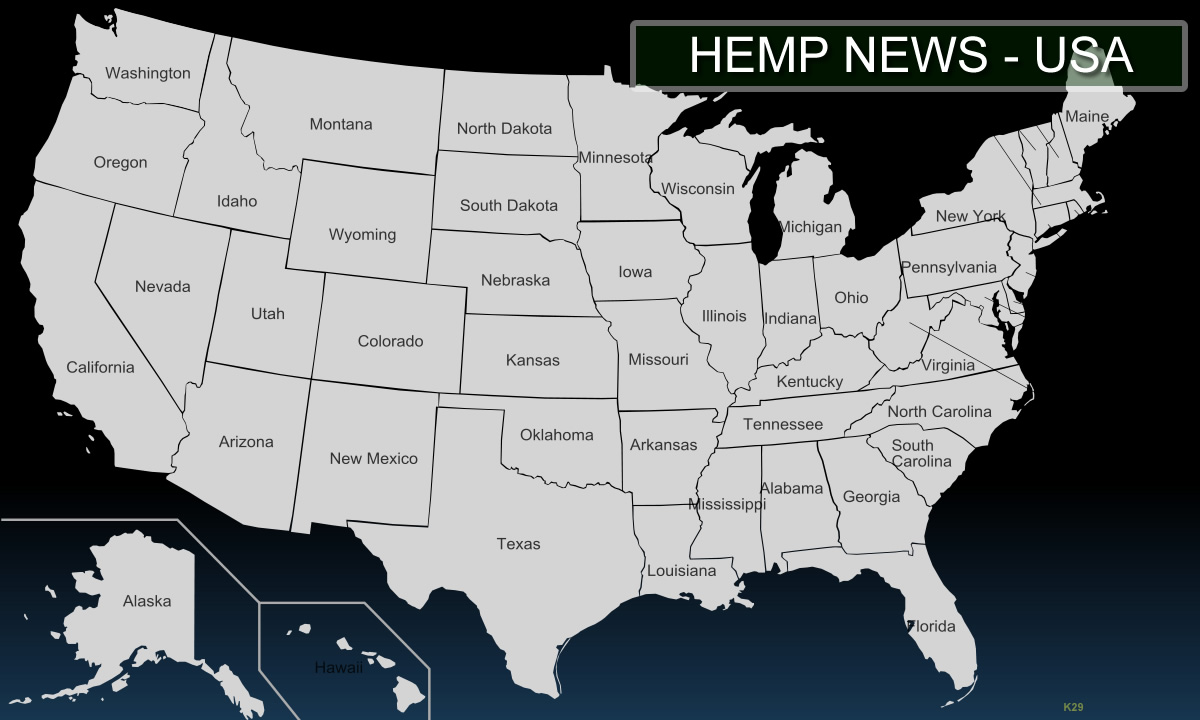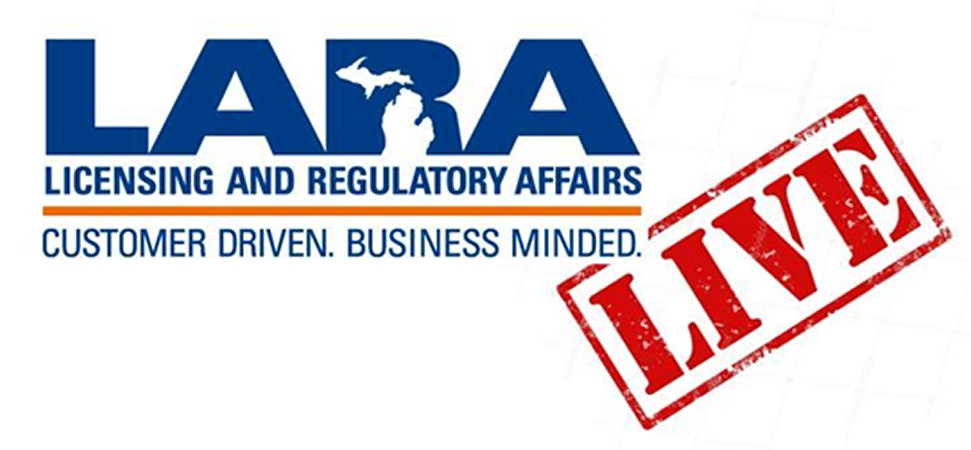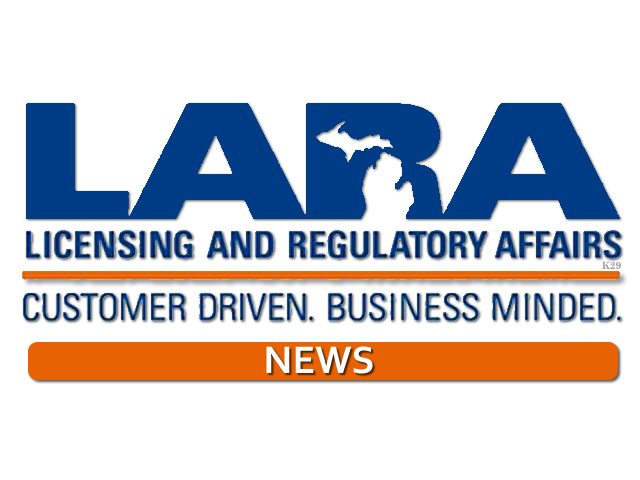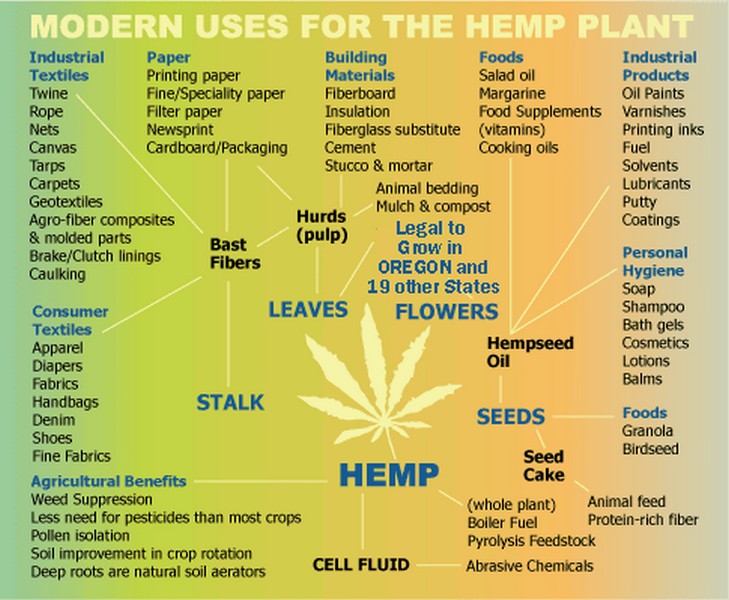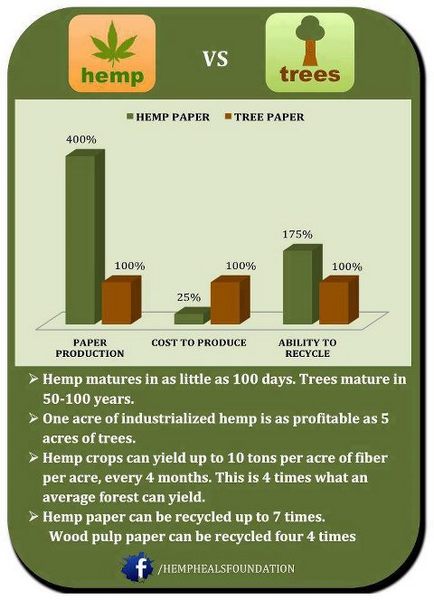
Jun 7, 2018 | Blog, Hemp
(1) an overview of the threat FOV Race 4 poses to the
cotton industry in the United States;
(2) the status and progress of Federal research initiatives
to detect, contain, or eradicate FOV Race 4, including current
FOV Race 4-specific research projects; and
(3) a comprehensive strategy to combat FOV Race 4 that
establishes—
(A) detection and identification goals;
(B) containment goals;
(C) eradication goals; and
(D) a plan to partner with the cotton industry in the
United States to maximize resources, information sharing,
and research responsiveness and effectiveness.
SEC. 7605. MISCELLANEOUS TECHNICAL CORRECTIONS.
Sections 7408 and 7409 of the Food, Conservation, and Energy
Act of 2008 (Public Law 110–246; 122 Stat. 2013) are both amended by striking ‘‘Title III of the Department of Agriculture Reorganization Act of 1994’’ and inserting ‘‘Title III of the Federal Crop Insurance Reform and Department of Agriculture Reorganization Act of 1994’’.
SEC. 7606. LEGITIMACY OF INDUSTRIAL HEMP RESEARCH.
(a) IN GENERAL.—Notwithstanding the Controlled Substances
Act (21 U.S.C. 801 et seq.), the Safe and Drug-Free Schools and
Communities Act (20 U.S.C. 7101 et seq.), chapter 81 of title 41,
United States Code, or any other Federal law, an institution of
higher education (as defined in section 101 of the Higher Education
Act of 1965 (20 U.S.C. 1001)) or a State department of agriculture
may grow or cultivate industrial hemp if—
(1) the industrial hemp is grown or cultivated for purposes
of research conducted under an agricultural pilot program or
other agricultural or academic research; and
(2) the growing or cultivating of industrial hemp is allowed
under the laws of the State in which such institution of higher
education or State department of agriculture is located and
such research occurs.
(b) DEFINITIONS.—In this section:
(1) AGRICULTURAL PILOT PROGRAM.—The term ‘‘agricultural
pilot program’’ means a pilot program to study the growth,
cultivation, or marketing of industrial hemp
(A) in States that permit the growth or cultivation of industrial hemp under the laws of the State; and
(B) in a manner that—
(i) ensures that only institutions of higher education
and State departments of agriculture are used
to grow or cultivate industrial hemp;
(ii) requires that sites used for growing or cultivating
industrial hemp in a State be certified by, and
registered with, the State department of agriculture;
and
(iii) authorizes State departments of agriculture
to promulgate regulations to carry out the pilot program
in the States in accordance with the purposes
of this section.
(2) INDUSTRIAL HEMP.—The term ‘‘industrial hemp’’ means
the plant Cannabis sativa L. and any part of such plant,
whether growing or not, with a delta-9 tetrahydrocannabinol
7 USC 5940. 7 USC 2241a, 3125a note.
VerDate Mar 15 2010 12:13 Apr 07, 2014 Jkt 039139 PO 00079 Frm 00264 Fmt 6580 Sfmt 6581 E:\PUBLAW\PUBL079.113 PUBL079 ccoleman on DSK8P6SHH1PROD with PUBLIC LAWS
PUBLIC LAW 113–79—FEB. 7, 2014 128 STAT. 913
concentration of not more than 0.3 percent on a dry weight
basis.
(3) STATE DEPARTMENT OF AGRICULTURE.—The term ‘‘State
department of agriculture’’ means the agency, commission, or
department of a State government responsible for agriculture
within the State.
TITLE VIII—FORESTRY
Subtitle A—Repeal of Certain Forestry
Programs
SEC. 8001. FOREST LAND ENHANCEMENT PROGRAM.
(a) REPEAL.—Section 4 of the Cooperative Forestry Assistance
Act of 1978 (16 U.S.C. 2103) is repealed.
(b) CONFORMING AMENDMENT.
Section 8002 of the Farm Security and Rural Investment Act of 2002 (Public Law 107–171; 16 U.S.C. 2103 note) is amended by striking subsection (a). SEC. 8002. WATERSHED FORESTRY ASSISTANCE PROGRAM. Section 6 of the Cooperative Forestry Assistance Act of 1978 (16 U.S.C. 2103b) is repealed.
SEC. 8003. EXPIRED COOPERATIVE NATIONAL FOREST PRODUCTS
MARKETING PROGRAM.
Section 18 of the Cooperative Forestry Assistance Act of 1978
(16 U.S.C. 2112) is repealed.
SEC. 8004. HISPANIC-SERVING INSTITUTION AGRICULTURAL LAND NATIONAL RESOURCES LEADERSHIP PROGRAM. Section 8402 of the Food, Conservation, and Energy Act of
2008 (16 U.S.C. 1649a) is repealed.
SEC. 8005. TRIBAL WATERSHED FORESTRY ASSISTANCE PROGRAM.
Section 303 of the Healthy Forests Restoration Act of 2003
(16 U.S.C. 6542) is repealed.
SEC. 8006. SEPARATE FOREST SERVICE DECISIONMAKING AND
APPEALS PROCESS.(a) REPEAL.—Section 322 of the Department of the Interior and Related Agencies Appropriations Act, 1993 (16 U.S.C. 1612 note; Public Law 102–381) is repealed.
(b) FOREST SERVICE PRE-DECISIONAL OBJECTION PROCESS.—
Section 428 of division E of the Consolidated Appropriations Act,
2012 (16 U.S.C. 6515 note; Public Law 112–74) shall not apply
to any project or activity implementing a land and resource management plan developed under section 6 of the Forest and Range land Renewable Resources Planning Act of 1974 (16 U.S.C. 1604) that is categorically excluded from documentation in an environmental assessment or an environmental impact statement under the National Environmental Policy Act of 1969 (42 U.S.C. 4321 et seq.).
VerDate Mar 15 2010 12:13 Apr 07, 2014 Jkt 039139 PO 00079 Frm 00265 Fmt 6580 Sfmt 6581 E:\PUBLAW\PUBL079.113 PUBL079 ccoleman on DSK8P6SHH1PROD with PUBLIC LAWS

Jun 1, 2018 | Blog, News
Information was relayed to me regarding a DEA statement about CBD
(paraphrasing and embellishing for your entertainment).
– Check this article out on the internet. The DEA said it was OK. They are not going to bust people or enforce the law for CBD or that stuff. We won…You can do it. Spread the word.
So I asked…what did I win, what can I do and do you actually believe things you read on the internet? The conversation ended there.
BTW – Regarding all this medical marijuana and anything related to it… After a personal experience with the “laws” that can be twisted into a required narrative… my catch phrase is…“You can…But you can’t”.
So it goes…
—————————————————
DEA Internal Directive Regarding the Presence of Cannabinoids in Products and Materials Made from the Cannabis Plant
(May 22, 2018)
The Ninth Circuit enjoined enforcement of what is now 21 C.F.R. § 1308.11(d)(31) (drug code 7370) with respect to products that are excluded from the definition of marijuana in the Controlled Substances Act (CSA). DEA thus does not enforce that provision as to such products.
———————————————————
I call BS…
So…Is anyone seeing it the way I am? I am sure you law hawks are…right?!! I keep reading it over and I see the same ball of confusion that’s always regurgitated by law makers that allows one to step into the trap and when the trap is triggered, they compound their advantage by throwing more charges upon you just to increase their odds of winning. With almost unlimited funds and time, prosecutors have the upper hand and winning is everything no matter the cost…except for the accused, their family and the rest of life’s burdens.
————————–
Whoah there self…bring it back to the subject of this article.
———————
OK here is what I am talking about and I will break it down highlighting the important parts. I have limited time because I have to get back to work…after all…I am just the copy boy.
Note: (From here on OPINIONS, observations and definitions to words or stuff you should focus on will be in red text. There will also be underlined items to pay attention to.)
The news goes…
DEA Internal Directive Regarding the Presence of Cannabinoids in Products and Materials Made from the Cannabis Plant
(May 22, 2018)
In 2004, the U.S. Court of Appeals for the Ninth Circuit enjoined (v. for a court to order that someone either do a specific act, cease a course of conduct or be prohibited from committing a certain act. ) DEA from enforcing certain regulations (from enforcing certain regulations) with respect to tetrahydrocannabinols (THC).
See Hemp Industries Ass’n v. DEA, 357 F.3d 1012 (9th Cir. 2004).
The government did not seek Supreme Court review of that decision. In response to various inquiries, DEA hereby issues to DEA personnel the following internal directive on how to carry out their duties in light of the Ninth Circuit’s decision.
The Ninth Circuit enjoined enforcement of what is now 21 C.F.R. § 1308.11(d)(31) (drug code 7370) with respect to products that are excluded from the definition of marijuana in the Controlled Substances Act (products that are excluded from the definition of marijuana in the Controlled Substances Act ) (CSA). DEA thus does not enforce that provision as to such products (DEA thus does not enforce that provision as to such products).
Consistent with the Ninth Circuit’s decision, DEA does not enforce 21 C.F.R. § 1308.35.
Products and materials that are made from the cannabis plant and which fall outside the CSA definition of marijuana (such as sterilized seeds, oil or cake made from the seeds, and mature stalks) are not controlled under the CSA. Such products may accordingly be sold and otherwise distributed throughout the United States without restriction under the CSA or its implementing regulations. The mere presence of cannabinoids is not itself dispositive (adj 1 : directed toward or effecting a disposition (as of a case) [an endless variety of …pretrial motions “Robert Shaw-Meadow”] 2 : relating to a disposition of property [ words in a will] 3 : providing a final resolution (as of an issue) : having control over an outcome [ of the question] as to whether a substance is within the scope of the CSA; the dispositive question is whether the substance falls within the CSA definition of marijuana (falls within the CSA definition of marijuana).
OK…BEFORE WE LOOK AT AN UPDATED CODE…LET US CHECK THE DEFINITION OF MARIJUANA IN THE CONTROLLED SUBSTANCE ACT….Keep in mind that it is a Schedule 1 drug.
Title 21 United States Code (USC) Controlled Substances Act
802. Definitions
(15) The term “manufacture” means the production, preparation, propagation, compounding, or processing of a drug or other substance, either directly or indirectly or by extraction from substances of natural origin, or independently by means of chemical synthesis or by a combination of extraction and chemical synthesis, and includes any packaging or repackaging of such substance or labeling or relabeling of its container; except that such term does not include the preparation, compounding, packaging, or labeling of a drug or other substance in conformity with applicable State or local law by a practitioner as an incident to his administration or dispensing of such drug or substance in the course of his professional practice. The term “manufacturer” means a person who manufactures a drug or other substance.
(16) The term “marihuana” means all parts of the plant Cannabis sativa L., whether growing or not; the seeds thereof; the resin extracted from any part of such plant; and every compound, manufacture, salt, derivative, mixture, or preparation of such plant, its seeds or resin.
Such term does not include the mature stalks of such plant, fiber produced from such stalks, oil or cake made from the seeds of such plant, any other compound, manufacture, salt, derivative, mixture, or preparation of such mature stalks (except the resin extracted therefrom), fiber, oil, or cake, or the sterilized seed of such plant which is incapable of germination.
What? Read it slowly again and be ready to come back to it to read again. Is it or isn’t it?
Keep this in mind from above…(The DEA thus does not enforce that provision as to such products under 21 C.F.R. § 1308.35)
PART 1308 — SCHEDULES OF CONTROLLED SUBSTANCES
EXEMPT CANNABIS PLANT MATERIAL, AND PRODUCTS MADE THEREFROM, THAT CONTAIN TETRAHYDROCANNABINOLS
- 1308.35 Exemption of certain cannabis plant material, and products made therefrom, that contain tetrahydrocannabinols.
(a) Any processed plant material or animal feed mixture containing any amount of tetrahydrocannabinols (THC) that is both:
(1) Made from any portion of a plant of the genus Cannabis excluded from the definition of marijuana under the Act [i.e., the mature stalks of such plant, fiber produced from such stalks, oil or cake made from the seeds of such plant, any other compound, manufacture, salt, derivative, mixture, or preparation of such mature stalks (except the resin extracted therefrom), fiber, oil, or cake, or the sterilized seed of such plant which is incapable of germination] and (2) Not used, or intended for use, for human consumption (Not used, or intended for use, for human consumption), has been exempted by the Administrator from the application of the Act and this chapter.
(b) As used in this section, the following terms shall have the meanings specified:
(1) The term processed plant material means cannabis plant material that has been subject to industrial processes, or mixed with other ingredients, such that it cannot readily be converted into any form that can be used for human consumption.
(2) The term animal feed mixture means sterilized cannabis seeds mixed with other ingredients (not derived from the cannabis plant) in a formulation that is designed, marketed, and distributed for animal consumption (and not for human consumption).
(3) The term used for human consumption means either:
(i) Ingested orally or (ii) Applied by any means such that THC enters the human body.
(4) The term intended for use for human consumption means any of the following:
(i) Designed by the manufacturer for human consumption; (ii) Marketed for human consumption; or (iii) Distributed, exported, or imported, with the intent that it be used for human consumption.
(c) In any proceeding arising under the Act or this chapter, the burden of going forward with the evidence that a material, compound, mixture, or preparation containing THC is exempt from control pursuant to this section shall be upon the person claiming such exemption, as set forth in section 515(a)(1) of the Act (21 U.S.C. 885(a)(1)). In order to meet this burden with respect to a product or plant material that has not been expressly exempted from control by the Administrator pursuant to Sec. 1308.23, the person claiming the exemption must present rigorous scientific evidence, including well-documented scientific studies by experts trained and qualified to evaluate the effects of drugs on humans.
The way I interpret it is…If you are not human the DEA will not enforce it or really if it is not made for human consumption as defined above. So Hemp Oil / CBD / Soap / Lotion / Hemp Beer / Soda /etc… Are they legal or an illegal Schedule 1 possession
But wait…you say there is no THC in those products…the burden is on you to scientifically prove it and of course…
The DEA States – \1\ Although it might be theoretically possible to produce a CBD extract that contains absolutely no amounts of other cannabinoids, the DEA is not aware of any industrially-utilized methods that have achieved this result.
OK Define Cannabinoids (the new way)
(58) Marihuana Extract–7350
“Meaning an extract containing one or more cannabinoids that has been derived from any plant of the genus Cannabis, other than the separated resin (whether crude or purified) obtained from the plant.”
Still a Schedule 1 drug…………..
§1308.11 Schedule I.
(a) Schedule I shall consist of the drugs and other substances, by whatever official name, common or usual name, chemical name, or brand name designated, listed in this section. Each drug or substance has been assigned the DEA Controlled Substances Code Number set forth opposite it.
(b) Opiates. Unless specifically excepted or unless listed in another schedule, any of the following opiates, including their isomers, esters, ethers, salts, and salts of isomers, esters and ethers, whenever the existence of such isomers, esters, ethers and salts is possible within the specific chemical designation (for purposes of paragraph (b)(34) only, the term isomer includes the optical and geometric isomers):
Which brings us to the new drug code for Marijuana Extract .
The United Nations Conventions on international drug control treats extracts from the cannabis plant somewhat differently than marihuana or tetrahydrocannabinols. The creation of a new drug code in the DEA regulations for marihuana extracts will allow for more appropriate accounting of such materials consistent with treaty provisions.
DEPARTMENT OF JUSTICE
Drug Enforcement Administration
21 CFR Part 1308
[Docket No. DEA-342] RIN 1117-AB33
Establishment of a New Drug Code for Marihuana Extract
AGENCY: Drug Enforcement Administration, Department of Justice.
ACTION: Final rule.
SUMMARY: The Drug Enforcement Administration is creating a new Administration Controlled Substances Code Number for “Marihuana Extract.” This code number will allow DEA and DEA-registered entities to track quantities of this material separately from quantities of marihuana. This, in turn, will aid in complying with relevant treaty provisions.
Under international drug control treaties administered by the United Nations, some differences exist between the regulatory controls pertaining to marihuana extract versus those for marihuana and tetrahydrocannabinols. The DEA has previously established separate code numbers for marihuana and for tetrahydrocannabinols, but not for marihuana extract. To better track these materials and comply with treaty provisions, DEA is creating a separate code number for marihuana extract with the following definition: “Meaning an extract containing one or more cannabinoids that has been derived from any plant of the genus Cannabis, other than the separated resin (whether crude or purified) obtained from the plant.” Extracts of marihuana will continue to be treated as Schedule I controlled substances.
DATES: Effective: January 13, 2017.
Read on – Specifically the comments
SUPPLEMENTARY INFORMATION:
Background
As provided in 21 CFR 1308.03, each controlled substance or basic class thereof is assigned a four digit Administration Controlled Substance Code Number (“Code number” or “drug code”) that is used to track quantities of the controlled substance imported and exported to and from the United States. Additionally, the DEA uses these code numbers in establishing aggregate production quotas for basic classes of controlled substances listed in Schedules I and II as required by 21 U.S.C. 826.
Consistent with the Controlled Substances Act (CSA), the schedules contained in DEA regulations include marihuana (drug code 7360) in Schedule I. 21 CFR 1308.11(d)(23). This listing includes (unless specifically excepted or unless listed in another schedule) any material, compound, mixture, or preparation, which contains any quantity of the substance, or which contains any of its salts, isomers, and salts of isomers that are possible within the specific chemical designation. Because the definition of marihuana in 21 U.S.C. 802(16) includes both derivatives and preparations of marihuana, the DEA until now has used drug code 7360 for extracts of marihuana.
This final rule finalizes a July 5, 2011, Notice of Proposed Rulemaking (76 FR 39039) in which the DEA proposed that a new drug code 7350 be used for extracts of marihuana.
Why a New Code Number Is Needed
The United Nations Conventions on international drug control treats extracts from the cannabis plant somewhat differently than marihuana or tetrahydrocannabinols. The creation of a new drug code in the DEA regulations for marihuana extracts will allow for more appropriate accounting of such materials consistent with treaty provisions.
The Single Convention on Narcotic Drugs, 1961 (“Single Convention”) and the 1971 Convention on Psychotropic Substances (“Psychotropic Convention”) provide for the international control of marihuana constituents. Many of the CSA’s provisions were drafted to comply with these Conventions. The CSA includes schemes of drug scheduling and procedures for adding, removing, and transferring drugs among the schedules that are similar, in some ways, to those in the Single Convention. With respect to those drugs that are subject to control under the Single Convention, the CSA mandates that DEA control such drugs in a manner that will ensure the United States meets its obligations under the Single Convention. 21 U.S.C. 811(d)(1).
Somewhat similar to the CSA, the Single Convention lists substances in four schedules. However, under the Single Convention, the drugs that are subject to the most stringent controls are in Schedule IV. Another difference between the CSA and the Single Convention is that, under the latter, a drug can be listed in more than one schedule. Cannabis and cannabis resin are listed in both Schedule IV and Schedule I of the Single Convention. Schedule I controls under the Single Convention include: Requirements for import and export authorization, licensing of manufacturers/distributors, recordkeeping requirements, a requirement for prescriptions for medical use, annual estimate of needs, quotas, annual statistical reporting, and a requirement that use be limited to medical and scientific purposes. Schedule II of the Single Convention is similar in controls to Schedule I with a few exceptions, and Schedule III is less restrictive. All substances listed in Schedule IV are also listed in Schedule I under the Single Convention in order to encompass the requirements mentioned above. In addition, as indicated, the Single Convention imposes certain heightened measures of control with respect to Schedule IV drugs. The placing of a drug into both Schedule I and Schedule IV, therefore imposes the most stringent controls under the Single Convention. Although cannabis and cannabis resin are listed in Schedules I and IV of the Single Convention, cannabis extracts are listed only in Schedule I.
Read these…
Comments
In response to the July 5, 2011, Notice of Proposed Rulemaking (76 FR 39039), the DEA received six submissions from five commenters. Three of the comments raised issues relating to the medical use or legality of marihuana/cannabis; these comments were not germane to the issues addressed by this rulemaking. A fourth comment was merely a clarification of a comment previously submitted.
One comment requested clarification of whether the new drug code will be applicable to cannabidiol (CBD), if it is not combined with cannabinols.
DEA response: For practical purposes, all extracts that contain CBD will also contain at least small amounts of other cannabinoids. \1\ However, if it were possible to produce from the cannabis plant an extract that contained only CBD and no other cannabinoids, such an extract would fall within the new drug code 7350. In view of this comment, the regulatory text accompanying new drug code 7350 has been modified slightly to make clear that it includes cannabis extracts that contain only one cannabinoid.
—————————————————————————
\1\ Although it might be theoretically possible to produce a CBD extract that contains absolutely no amounts of other cannabinoids, the DEA is not aware of any industrially-utilized methods that have achieved this result.
—————————————————————————
Another comment from a pharmaceutical firm currently involved in cannabinoid research and product development praised DEA’s efforts to establish a new drug code for marihuana extracts as a means to more accurately reflect the activities of scientific research and provide more consistent adherence to the requirements of the Single Convention. However, the comment expressed concerns that the proposed definition for the new drug code (i.e. “meaning extracts that have been derived from any plant of the genus Cannabis and which contain cannabinols and cannabidiols”) is too narrow. The comment suggested that the broader term “cannabinoids” be substituted for “cannabinols and cannabidiols.” The comment pointed out that other constituents of the marihuana plant may have therapeutic potential. The comment further clarified that the broader term “cannabinoid” includes both cannabinol-type compounds and cannabidiol-type compounds, as well as cannabichromene-type compounds, cannabigerol-type compounds, and other categories of compounds.
DEA response: DEA agrees with the commenter that the term “cannabinoid” would provide for a broader definition of marihuana extract; however, use of the term “cannabinoid” necessitates that the DEA clarify that the new marihuana extract category (drug code 7350) is not intended to include “cannabis resin” as defined in the U.N. Single Convention.
As discussed in the NPRM, a new drug code is necessary in order to better account for these materials in accordance with treaty obligations. The Single Convention placed “cannabis” and “cannabis resin” under both Schedule I and IV of the Convention, the most stringent level of control under the Convention. While “cannabis resin” is extracted from “cannabis,” the Single Convention specifically controls “extracts” separately. Extracts of cannabis are controlled only under Schedule I of the Convention, which is a lower level of control than “cannabis resin.”
Accordingly, it is the DEA’s intent to define the term “marihuana extract” so as to exclude material referenced as “cannabis resin” under the Single Convention on Narcotics. “Cannabis resin” (regulated under the CSA as a resin of marihuana) contains a variety of “cannabinoids” and will continue to be regulated as marihuana under drug code 7360. The new drug code for marihuana extracts under 21 CFR 1308.11(d)(58) will exclude the resin. Cannabis resin and marihuana resin remain captured under the drug code for marihuana (drug code 7360), thus differentiating this material from marihuana extracts (new drug code 7350). This will maintain compliance with the Single Convention.
Final Action
After careful consideration of all comments, the DEA is hereby amending 21 CFR 1308.11(d) to include a new subparagraph (58) which creates a new code number in Schedule I as follows:
“(58) Marihuana Extract–7350
“Meaning an extract containing one or more cannabinoids that has been derived from any plant of the genus Cannabis, other than the separated resin (whether crude or purified) obtained from the plant.”
The creation of this new drug code in the DEA regulations for marihuana extracts allows for more appropriate accounting of such materials consistent with treaty provisions. Such marihuana extracts remain in Schedule I. Entities registered to handle marihuana (under drug code 7360) that also handle marihuana extracts, will need to apply to modify their registrations to add the new drug code 7350 to their existing DEA registrations and procure quotas specifically for drug code 7350 each year.
Bottom Line as I see it regarding CBD /Hemp…
If it was not made for human use as defined by the law the DEA will not enforce it.
Anyone say different – let me know.
Signed,
The Copy Boy

Jul 27, 2015 | News
Connecticut is over its ban on hemp. Beginning July 1, the industrial crop will be as legal as every other farmable thing. That flies in the face of the federal government’s criminalization of hemp.
“What this gets down to is the power of the people,” said Mike Maharrey of the Tenth Amendment Center. “When enough people tell the feds to pound sand, there’s not much D.C. can do to continue their unconstitutional prohibition on this productive plant.”
Experts suggest that the U.S. market for hemp is around $500 million per year. They count as many as 25,000 uses for industrial hemp, including food, cosmetics, plastics and bio-fuel. The U.S. is currently the world’s #1 importer of hemp fiber for various products, with China and Canada acting as the top two exporters in the world.
Connecticut joins the ranks of Vermont, Colorado and other states that are ignoring federal hemp prohibition. Oregon has handed out 13 hemp farming licenses so far. South Carolina, North Dakota, and Maine have laws that address the prohibition in different ways. President Obama signed a farm bill last year that authorized research on hemp for states which had already legalized it.
States That Farm Industrial Hemp
- Hawaii
- Kentucky
- Maine
- Maryland
- Montana
- North Dakota
- Oregon
- Vermont
- West Virginia
Over 30 Countries That Farm Hemp;
- Australia
- Canada
- China
- France
- Hungary
- Italy
- Japan
- Mexico
- North Korea
- Poland
- Romania
- Russia
- United Kingdom
INFORMATION ABOUT INDUSTRIAL HEMP
NORML Statement on the Cultivation of Industrial Hemp
“[T]he US market for hemp-based products has a highly dedicated and growing demand base. … [A] commercial hemp industry in the United States could provide opportunities as an economically viable alternative crop for some US growers.” – Congressional Research Service white paper, ‘Hemp as an Agricultural Commodity,’ 2013
Introduction Why are American farmers legally forbidden from growing a plant proclaimed by Popular Mechanics magazine to have the potential to be manufactured into more than 25,000 environmentally friendly products? It’s because the plant is hemp — also known as marijuana — and for more than 60 years, it has remained the U.S. government’s public enemy #1.
What is Hemp? Hemp is a distinct variety of the plant species cannabis sativa L. that contains minimal (less than 1%) amounts of tetrahydrocannabinol (THC), the primary psychoactive ingredient in marijuana. It is a tall, slender, fibrous plant similar to flax or kenaf. Various parts of the plant can be utilized in the making of textiles, paper, paints, clothing, plastics, cosmetics, foodstuffs, insulation, animal feed and other products.
Hemp produces a much higher yield per acre than do common substitutes such as cotton and requires few pesticides. In addition, hemp has an average growing cycle of only 100 days and leaves the soil virtually weed-free for the next planting.
The hemp plant is currently harvested for commercial purposes in over 30 nations, including Canada, Japan and the European Union. Although it grows wild across much of America and presents no public health or safety threat, hemp is nevertheless routinely uprooted and destroyed by law enforcement. Each year, approximately 98% of all the marijuana eliminated by the DEA’s “Domestic Cannabis Eradication/Suppression Program” is actually hemp.
Despite America’s bureaucratic moratorium on industrial hemp cultivation, a domestic industry exists and continues to grow. U.S. retailers and manufacturers annually import approximately 1.9 million pounds of hemp fiber, 450,000 pounds of hemp seeds, and 331 pounds of hempseed oil from Canada and other nations that regulate hemp farming. (Federal law permits the importation of hemp fiber, sterilized seeds, and ingestible hemp-based products containing no THC.) In addition, a growing number of health professionals are praising hemp seeds’ nutritional value, noting that it’s second only to soy in protein and contains the highest concentration of essential amino and fatty acids found in any food. Given the crop’s versatility, it’s no wonder that hemp has been endorsed by organizations and individuals such as the U.S. Agriculture Department’s Alternative Agricultural Research, the National Conference of State Legislatures, environmentalist Ralph Nader and health guru Andrew Weil.
History of Hemp Researchers trace hemp’s history as a fiber and food crop back some 12,000 years. During America’s colonial era, many of the founding fathers — including George Washington and Thomas Jefferson — espoused its manufacturing for rope, sails and paper. Early settlers also used hemp seeds as a source for lamp oil and some colonies made hemp cultivation compulsory, calling its production necessary for the “wealth and protection of the country.”
Hemp continued to be cultivated in America until 1937 when Congress passed the Marihuana Tax Act outlawing marijuana. Although not a bill specifically aimed at hemp production, legal limitations posed by the legislation put an end to the once prominent industry.
Hemp production briefly re-emerged in 1942 when the federal government encouraged American farmers to grow it for the war effort. Armed with the United States Department of Agriculture (USDA) film “Hemp for Victory,” thousands of farmers grew hundreds of thousands of acres of hemp for wartime needs. Unfortunately, when World War II ended, so did the government’s allowance of hemp cultivation. By 1957, prohibitionists had reasserted a total ban on hemp production. That federal ban remains in effect today.
Where does the DEA Stand on Hemp? Despite hemp’s emergence as a worldwide economic industry, the Drug Enforcement Administration (DEA) and Office of National Drug Control Policy (ONDCP) remain firmly opposed to it. Currently, only the DEA has the power to license farmers to legally grow hemp, even in those states where local laws permit it. Not surprisingly, the DEA has continued to deny every permit for large-scale hemp farming (In 1999, they did give Hawaii researchers permission to grow a one-quarter acre test plot of the crop.) within America’s borders for the last four decades.
In a 1995 USDA “White Paper,” the DEA stated that they are “opposed to any consideration of hemp as a legitimate fiber or pulp product,” and recommended that any USDA researcher who wishes to explore the issue must first be briefed by White House anti-drug officials. Since then, DEA officials have stonewalled several state efforts to enact hemp cultivation and research bills by threatening to arrest any farmers who attempt to grow it. Most recently, President George Bush’s spokesman Ari Flesher answered the question: “Does the President favor the legalization of industrial hemp?” by stating that Bush has not made “any statements … that would lend one to reach that conclusion.”
Hemp Today Although our federal government refuses to waver on hemp prohibition, public, state and international support is growing. The European Union now subsidizes farmers to grow hemp, which is legally recognized as a commercial crop by the United Nations Single Convention on Narcotic Drugs, the North American Free Trade Agreement (NAFTA), and the General Agreement on Tariffs and Trade (GATT).
In recent years, a number of U.S. states have commissioned studies recommending hemp as a viable economic crop. Most recently, legislatures in Montana and North Dakota have enacted legislation licensing farmers to grow hemp (though federal approval still remains necessary), hopefully paving the way for a renewed U.S. hemp cultivation industry in the not-so-distant future.
End NORML INFO
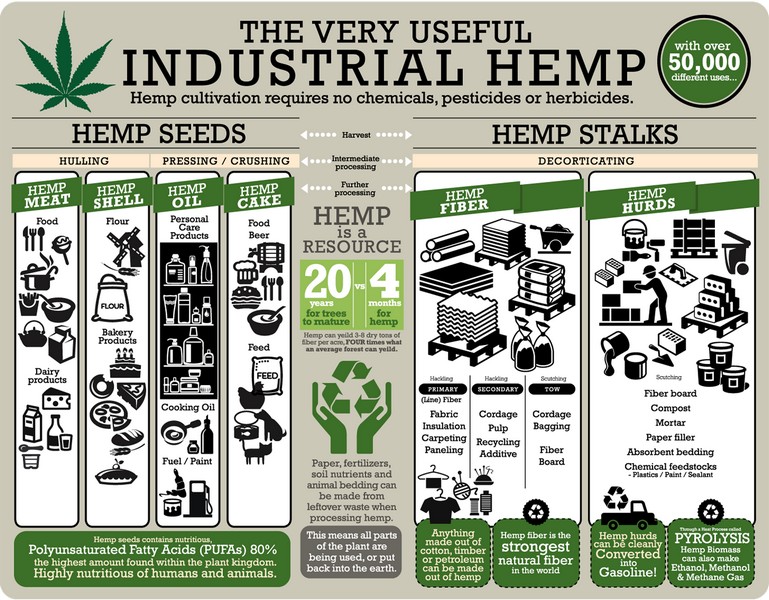

Could it be true?
Did the Government Give Industrial Hemp a Pass to Clean Up Radiation in the States?
Dr. Ilya Raskin of Rutgers University’s Biotechnology Center for Agriculture and the Environment, who was a member of the original task force sent by the IAEA to examine food safety at the Chernobyl site figured out that through phytoremediation utilizing hemp, among other plants, the soil, and thus the food supply could be saved from toxicity.
Phytoremediation is the process whereby green plants remove toxins from the soil. Plants can extract specific elements within their ecosystem and still thrive. They accumulate the toxins in their tissues and root systems but remain undamaged. Sunflowers have been known to do something similar for centuries, eliminating heavy metals and pesticides from damaged soil. Two members of the mustard family are also useful for this process – Brassica juncea and Brassica carinata, but it seems hemp is quite amazing at sucking up radiation.
Granted, the government is probably dumbfounded at what to do with the Fukushima radiation headed our way, but the legalization of hemp just might balance some of the toxicity scientists expect. Fortunately, California, one of the states that will be hardest hit, has already legalized industrial hemp, but it has to wait for the federal government to give states the right before they can actually grow it. The Farm Bill only allows ‘research’ growth at certain institutions in 10 states currently.
George Washington and Thomas Jefferson grew hemp. In light of Fukushima, let’s join our countries’ founders to grow it too. You can help clean the soil in your area if hemp or medical marijuana has been legalized in your state, and help it to pass in further states by being vocal with your state and federal representatives.
